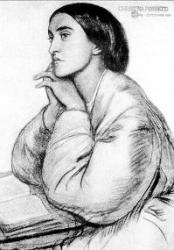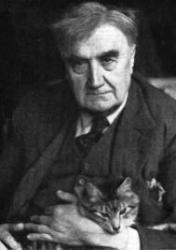Planning worship?
Check out our sister site, ZeteoSearch.org,
for 20+ additional resources related to your search.
- |
User Links
Search Results
How Far Is It to Bethlehem?
Author: Frances Chesterton Meter: 7.4.7.4 Appears in 12 hymnals First Line: How far is it to Bethlehem
How Far Is It to Bethlehem?
How Far Is It to Bethlehem
Author: Frances Alice Chesterton; Christina Rossetti Hymnal: Celebrating Grace Hymnal #138 (2010) Meter: Irregular Lyrics: 1 How far is it to Bethlehem,
not very far?
Shall we find the stable room
lit by a star?
Can we see the little child,
is He within?
If we lift the wooden latch,
may we go in?
2 May we stroke the creatures there,
oxen or sheep?
May we peek like them and see
Jesus asleep?
If we touch His tiny hand,
will He awake?
Will He know we've come so far
just for His sake?
3 O what can I give to Him,
poor as I am?
If I were a shepherd,
I'd bring a lamb;
if i were a wise man
I'd do my part;
yet what can I give to Him?
Give Him my heart.
Topics: God the Son Christmastide; Christian Year-Christmastide Languages: English Tune Title: STOWEY
How Far Is It to Bethlehem
How Far Is It to Bethlehem?
Author: Frances Chesterton, d. 1938 Hymnal: Songs of Light #316 (1977) Topics: Children's Christmas Languages: English Tune Title: [How far is it to Bethlehem?]
How Far Is It to Bethlehem?
How Far Is It to Bethlehem?
Author: Frances Alice Chesterton, 1869-1938 Hymnal: Community of Christ Sings #417 (2013) Meter: 7.4.7.4 First Line: How far is it to Bethlehem? Lyrics: 1 How far is it to Bethlehem?
Not very far.
Shall we find the stable-room
lit by a star?
Can we see the little child,
is he within?
If we lift the wooden latch
may we go in?
2 May we stroke the creatures there,
ox, ass, or sheep?
May we peep like them and see
Jesus asleep?
If we touch his tiny hand
will he awake?
Will he know we've come so far
just for his sake?
3 Great kings have precious gifts,
and we have naught,
little smiles and little tears
are all we brought.
For all weary children
Mary must weep.
Here, on his bed of straw sleep,
children, sleep.
God in his mother's arms,
babes in the byre,
sleep as they sleep
who find their heart's desire. Topics: Children; Christmas; Epiphany; Giving; Jesus Christ's Humanity Scripture: Matthew 2:9-11 Languages: English Tune Title: STOWEY
How Far Is It to Bethlehem?
Christina Georgina Rossetti

1830 - 1894 Person Name: Christina Rossetti Author (st. 3) of "How Far Is It to Bethlehem" in Celebrating Grace Hymnal Rossetti, Christina Georgina, daughter of Gabriel, and sister of Dante Gabriel and William Michael Rossetti, was born in London, Dec. 5, 1830, and received her education at home. Her published works include:—
(1) Goblin Market, and Other Poems, 1862; (2) The Prince's Progress, and Other Poems, 1866 ; (3) Poems, mainly a reprint of Nos. 1 and 2, 1875; (4) A Pageant, and Other Poems, 1881, &c.
In addition, Miss Rossetti has published several prose works, as:— Annus Domini (a book of prayers for every day in the year), 1874; Letter and Spirit of the Decalogue, 1883, and others. She has written very few hymns avowedly for church worship, but several centos have been compiled from her poems, and have passed into several hymn-books. These include:—
1. Dead is thy daughter, trouble not the Master. The raising of Jairus's daughter. From her Goblin Market, &c, 1862, into Lyra Mystica, 1865.
2. God the Father, give us grace. Invocation of the Holy Trinity. From Lyra Mystica into the Savoy Hymnary, for use in the Chapel Koyai, Savoy (see No. 8 below).
3. I bore with thee long weary days and nights. The Love of Christ. From her Goblin Market, &c, 1862, into Lyra Messianica, 1864.
4. I would have gone, God bade me stay. Resignation. From her Poems, Hymns, 1884, &c. 1875, into Horder's Congregational Hymns.
5. Once I thought to sit so high. A Body hast Thou prepared Me, or Passiontide. Contributed to Lyra Eucharistica, 1863.
6. The Advent moon shines cold and clear. Advent. From her Goblin Market, &c, 1862.
7 The flowers that bloom in sun and shade. The Eternity of God. In Mrs. C. Brock's Children's Hymn Book, 1881.
8. What are these that glow from afar? Martyrs. Part of the poem "We meet in joy though we part in sorrow," which appeared in Lyra Mystica, 1865, and then in Miss Rossetti's Prince's Progress, &c, 1866. It is the most widely used of her hymns. No. 2 above is also from the same poem.
Miss Rossetti's verses are profoundly suggestive and lyrical, and deserve a larger place than they occupy in the hymnody of the church. Her sonnets are amongst the finest in the English language. [Rev.W. Garrett Horder]
--John Julian, Dictionary of Hymnology (1907)
==============
Rossetti, Christina G., p. 978, i. The following hymns by Miss Rossetti have recently come into common use:—
1. A burdened heart that bleeds and bears. [Lent.] In her Time Flies: A Reading Diary, ed. 1897, p. 59, for March 26; and her Verses, &c., ed. 1898, p. 113. Included in Church Hymns, 1903.
2. Give me the lowest place, not that I dare. [Humility.] From her Prince's Progress, 1866, p. 216.
3. In the bleak midwinter. [Christmas.] In her Poetical Works, 1904, p. 246, as "Before 1872"; repeated in The English Hymnal, 1906.
4. None other Lamb, none other Name. [Jesus, All, and in All] From her The Face of the Deep, &c, 1892 (3rd ed. 1895, p. 176); and her Verses, &c, 1898, p. 36. It is the second of two poetical meditations on Rev. v. 6. In Church Hymns, 1903.
5. The shepherds had an angel. [Christmas.] In her Poetical Works, 1904, p. 187, this is entitled "A Christmas Carol. For my Godchildren," and dated 6 October, 1856. Repeated in the Sunday School Hymnary, 1905.
6. We know not a voice of that River. [The River of the Eternal City.] In The Face of the Deep, &c, 1892 (3rd ed. 1895, p. 523), as a poetical meditation on Rev, xxii. Also in her Verses, &c., 1898, p. 81.
Additional works by Miss Rossetti to those named on p. 978, i., include Time Flies A Reading Diary, 1885; Called to be Saints, 1881; Seek and Find, 1879; The Face of the Deep, A Devotional Commentary on the Apocalypse, 1892; and Verses ... reprinted fromCalled to be Saints, Time Flies, The Face of the Deep, 1893. It must be noted that (1) the hymn attributed to her, "Dead is thy daughter; trouble not the Master," is not by her, but by Mrs. C. F. Alexander, with whose name it appeared in Lyra Mystica, 1865; and (2) her “I would be gone; God bade me stay," is from her Prince's Progress, 1866, p. 204. Miss Rossetti d. Dec. 29, 1891.
--John Julian, Dictionary of Hymnology, New Supplement (1907)
Christina Georgina Rossetti
Ralph Vaughan Williams

1872 - 1958 Person Name: R. Vaughan Williams Adapter of "STOWEY" in The Beacon Song and Service book Through his composing, conducting, collecting, editing, and teaching, Ralph Vaughan Williams (b. Down Ampney, Gloucestershire, England, October 12, 1872; d. Westminster, London, England, August 26, 1958) became the chief figure in the realm of English music and church music in the first half of the twentieth century. His education included instruction at the Royal College of Music in London and Trinity College, Cambridge, as well as additional studies in Berlin and Paris. During World War I he served in the army medical corps in France. Vaughan Williams taught music at the Royal College of Music (1920-1940), conducted the Bach Choir in London (1920-1927), and directed the Leith Hill Music Festival in Dorking (1905-1953). A major influence in his life was the English folk song. A knowledgeable collector of folk songs, he was also a member of the Folksong Society and a supporter of the English Folk Dance Society. Vaughan Williams wrote various articles and books, including National Music (1935), and composed numerous arrangements of folk songs; many of his compositions show the impact of folk rhythms and melodic modes. His original compositions cover nearly all musical genres, from orchestral symphonies and concertos to choral works, from songs to operas, and from chamber music to music for films. Vaughan Williams's church music includes anthems; choral-orchestral works, such as Magnificat (1932), Dona Nobis Pacem (1936), and Hodie (1953); and hymn tune settings for organ. But most important to the history of hymnody, he was music editor of the most influential British hymnal at the beginning of the twentieth century, The English Hymnal (1906), and coeditor (with Martin Shaw) of Songs of Praise (1925, 1931) and the Oxford Book of Carols (1928).
Bert Polman
Ralph Vaughan Williams


 My Starred Hymns
My Starred Hymns

